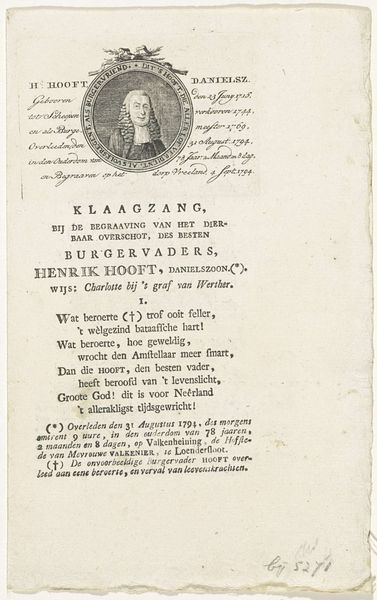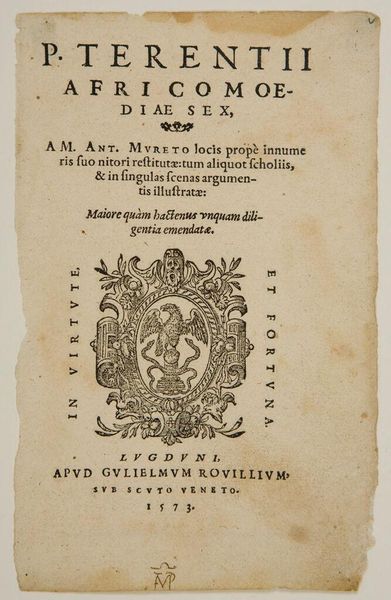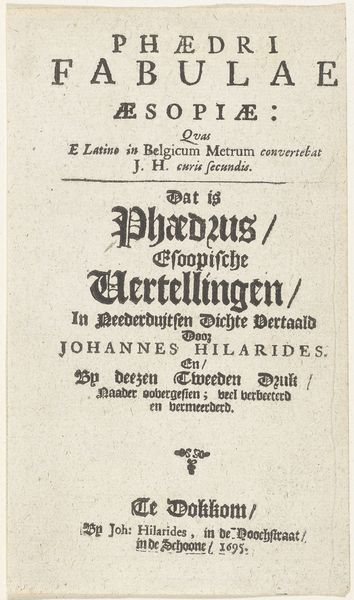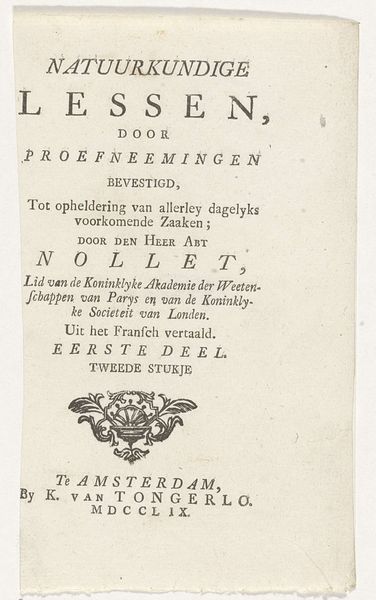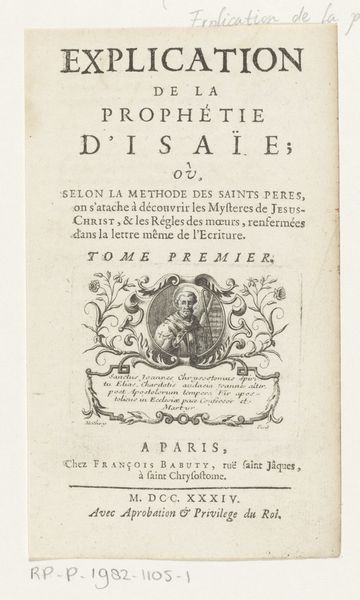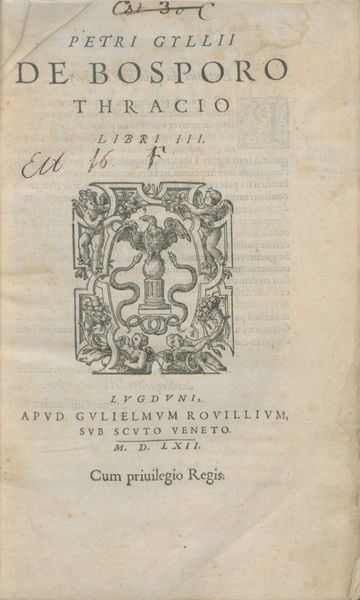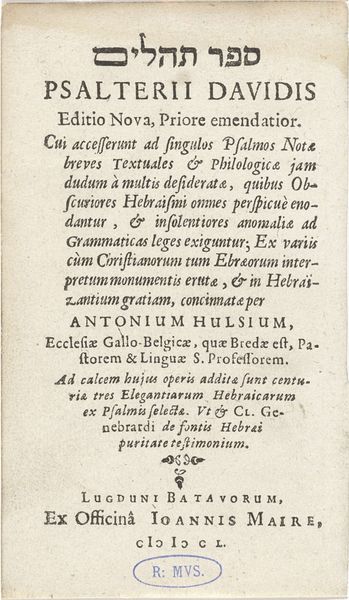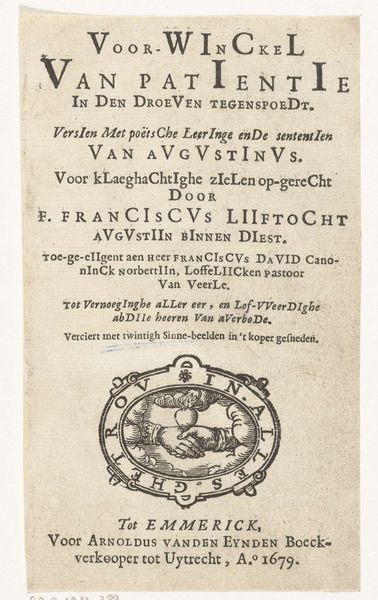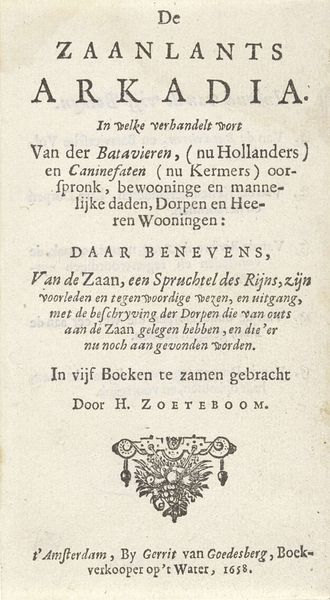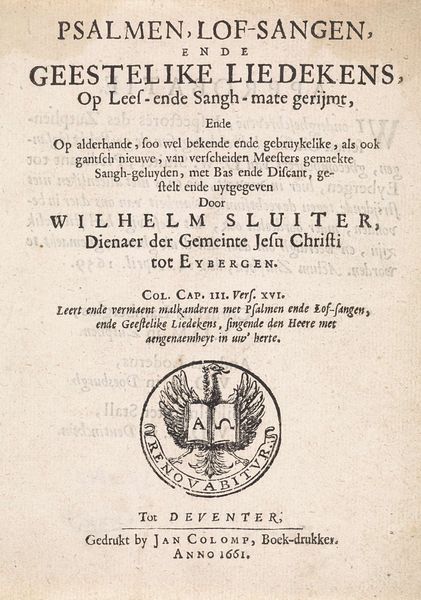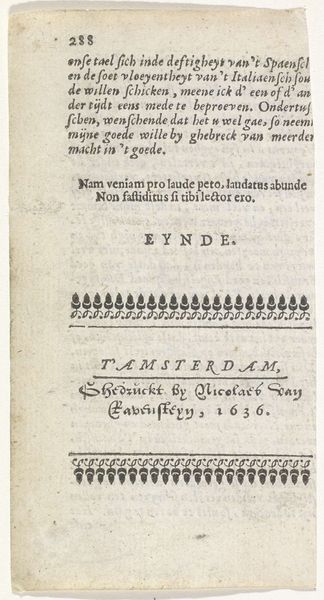
print, textile, engraving
#
aged paper
#
hand-lettering
# print
#
old engraving style
#
hand drawn type
#
hand lettering
#
textile
#
personal sketchbook
#
hand-drawn typeface
#
pen work
#
sketchbook drawing
#
handwritten font
#
engraving
Dimensions: height 125 mm, width 75 mm
Copyright: Rijks Museum: Open Domain
This is a title page from 1658, likely printed with movable type and copperplate engraving, presenting a Dutch translation of Homer's Iliad. The structure of the page is immediately evident: text dominates, arranged hierarchically to draw the eye, with the title in bold, larger font. Note the ornamental flourish midway down—a symmetrical, almost baroque design. This is a common feature in early printed books, acting as a visual marker and adding aesthetic value. Look closely at the letterforms. The typeface conveys a sense of classical gravitas, fitting for Homer’s epic. The texture is uneven, a result of the printing process itself, adding a tactile dimension to the visual experience. Consider how this page functions as a portal. It uses linguistic and ornamental signs to signal the content and cultural significance of the work it introduces. The formal elements of typography and ornament work together, reflecting the cultural values of the time and creating a structured reading experience. This is more than just information, it's a carefully constructed object, embedding the epic within a visual and material framework.
Comments
No comments
Be the first to comment and join the conversation on the ultimate creative platform.

